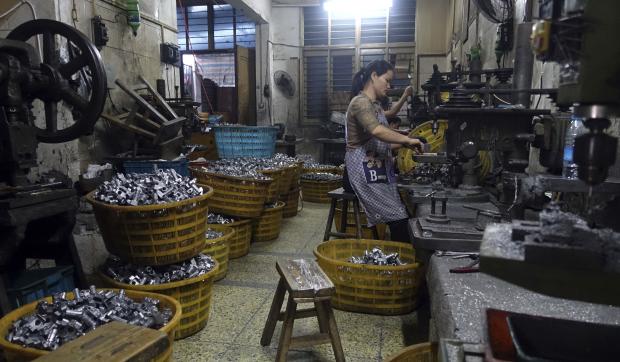PH trade deficit widens to $9.8B in Q1 as Chinese imports surged

Photo by ERIKA KINETZ / AP
MANILA, Philippines – Merchandise exports dropped for the fourth straight month in March while imports sustained growth for three consecutive months partly due to a surge in products from China, such that the trade-in-goods deficit widened by over a fifth to $9.8 billion at the end of the first quarter.
For the country’s chief economist, one way to arrest weak exports was to pursue more free trade agreements (FTAs) with the Philippines’ trading partners, even as protectionism was rearing its ugly head amid the trade tensions between giant economies China and the US.
The latest preliminary Philippine Statistics Authority (PSA) data released Wednesday showed that shipments of Philippine-made goods overseas declined 2.5 percent year-on-year to $5.88 billion last March, while the value of imported goods that entered the country that month climbed 7.8 percent—a faster pace than a year ago—to $9.01 billion.
As such, the balance of trade in goods remained at a deficit—a wider $3.14 billion compared to $2.34 billion in March last year.
Electronic products, which accounted for 55 percent of the country’s exports last March, posted a 3.7-percent decline in sales to $3.23 billion.
On the other hand, the Philippines’ exports of fresh bananas jumped 81.5 percent that month, according to the PSA.
Meanwhile, imports of cereals and cereal preparations—which included rice—climbed 97.9 percent in March, the first month that the rice import quota was removed as the Filipino staple food was instead slapped tariff to boost domestic supply and slash prices.
From January to March, Philippine exports slid 3.1 percent year-on-year to $16.38 billion, while imports grew 4.7 percent to $26.18 billion.
Surging imports widened the trade deficit by 21 percent from $8.1 billion during the same three-month period last year.
The yawning trade deficit had resulted in a ballooning current account deficit, as more dollars were being spent for importation.
The current account deficit hit a record $7.9 billion last year.
The wider current account deficit, in turn, had been putting pressure on the peso.
But economic managers had said that with the Duterte administration’s ambitious “Build, Build, Build” infrastructure program in full swing, demand for imports of mostly capital goods would remain strong in the near term.
PSA data showed that the US was the No. 1 destination of exports in the first quarter, which at $2.64 billion accounted for 16.1 percent of the total and rose 4.7 percent year-on-year.
The Philippines’ other top export destinations as of March were Japan ($2.61 billion), Hong Kong ($2.13 billion), China ($2.05 billion), and Singapore ($887.47 million), although only exports to the US and mainland China recorded growth compared to last year.
During the first three months, imports from China jumped by nearly a fourth or 24.9 percent to $5.58 billion, cornering over a fifth or 21.3 percent of the total.
In the month of March alone, Chinese imports surged 50.2 percent to $1.92 billion.
End-March imported goods from Japan were less than half that of China’s, at $2.54 billion, followed by South Korea’s $2.17 billion, the US’s $1.91 billion, and Thailand’s $1.71 billion.
Among the country’s five top sources of imported products, it was only China that registered year-on-year growth during the first quarter.
In a statement, Socioeconomic Planning Secretary Ernesto M. Pernia said that “to drive up exports, we are encouraging exporters to continue to diversify products to expand their markets.”
For its part, the government “continues to explore non-traditional markets such as Eastern European countries and is seeking to strengthen ties with traditional trading partners,” said Pernia, who heads the state planning agency National Economic and Development Authority (Neda).
For instance, “the Export Marketing Bureau of the Department of Trade and Industry (DTI) is looking at non-electronic products such as cars, desiccated coconut, coconut oil, and footwear and wearables, among others, as new export growth drivers,” the Neda chief said.
For Pernia, free trade will also help bolster the country’s exports.
“Recently, the Philippines secured a commitment from the United Kingdom on continuing the same level of market access to UK post-Brexit, similar to the European Union’s (EU) Generalized Scheme of Preferences,” he said.
Also, “the Philippines and South Korea arrived at a common understanding to pursue a bilateral free trade agreement and could possibly conclude the negotiations in time for the 2019 Republic of Korea-Asean Commemorative Summit in November,” he added.














